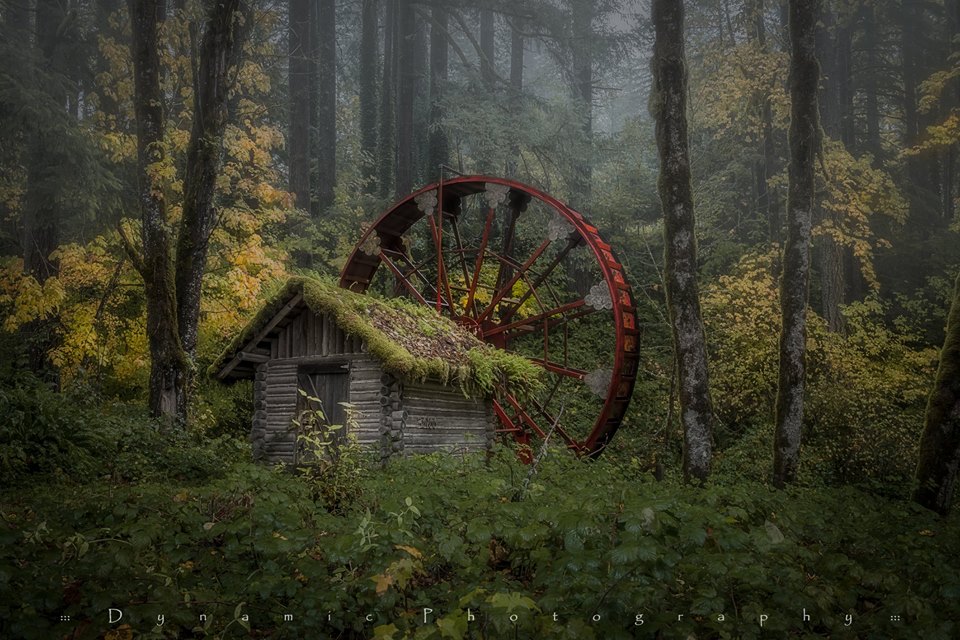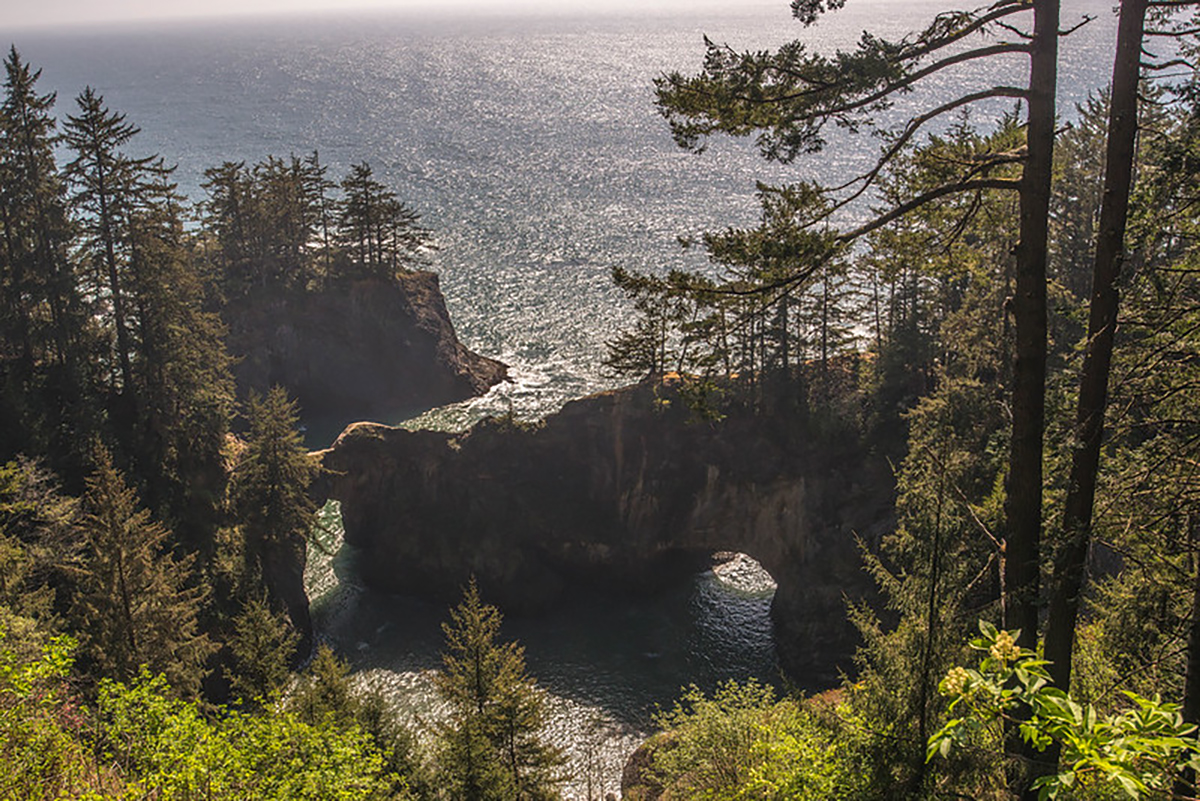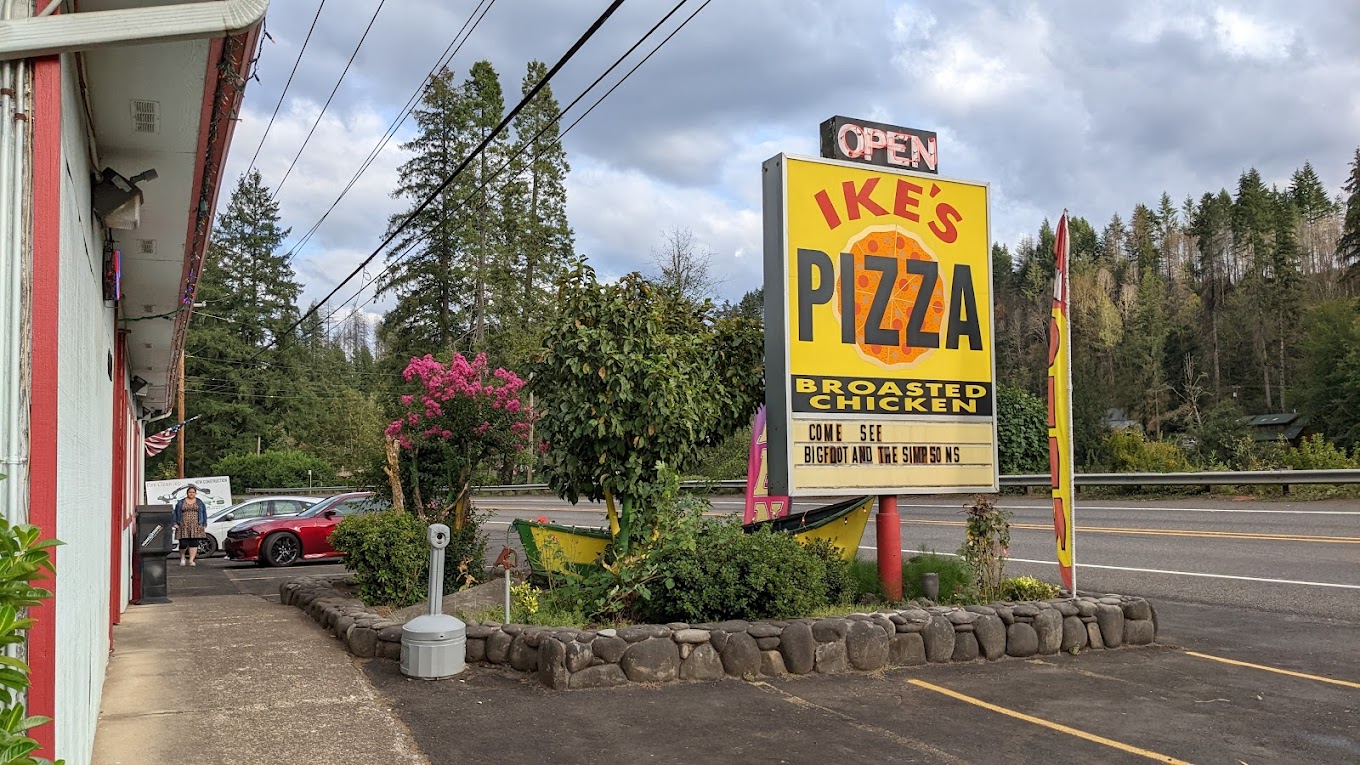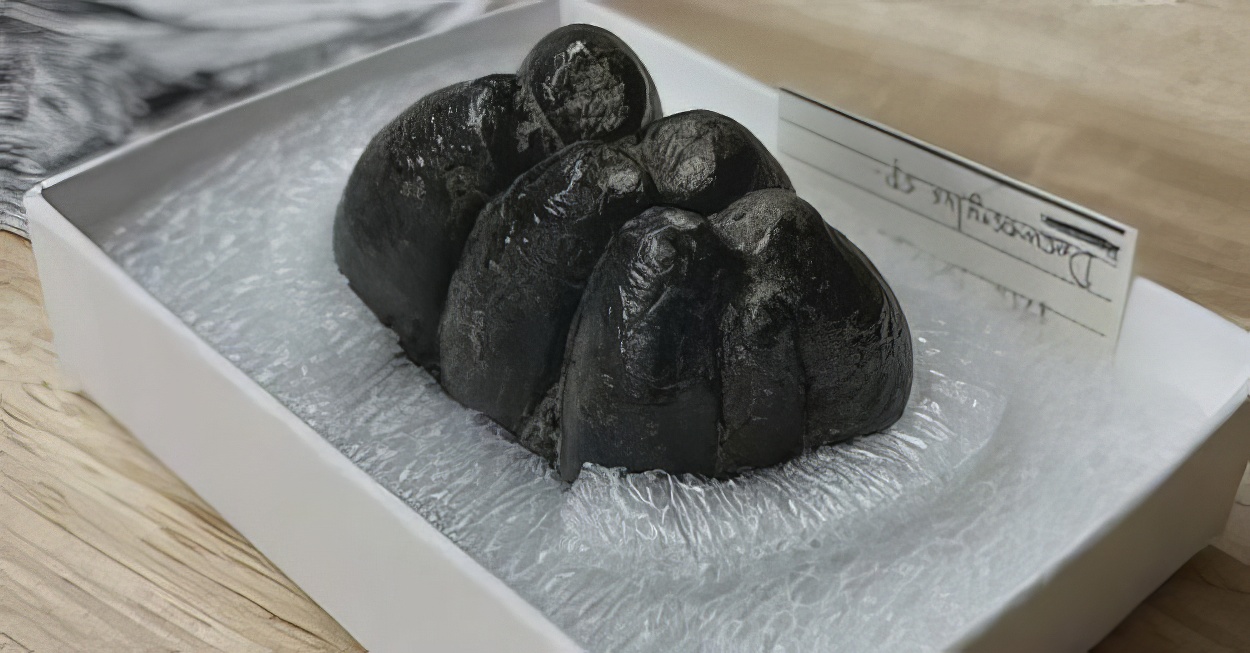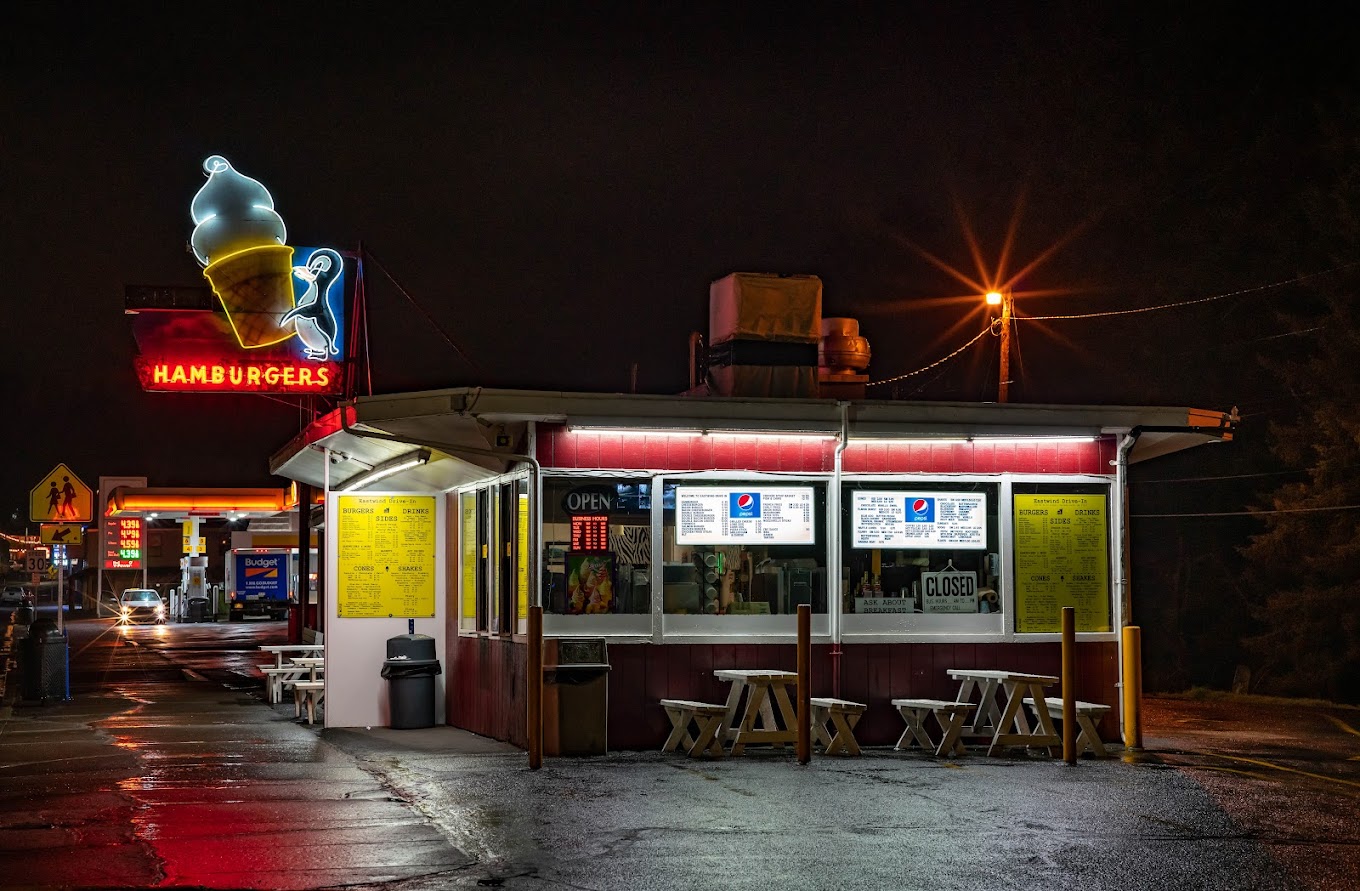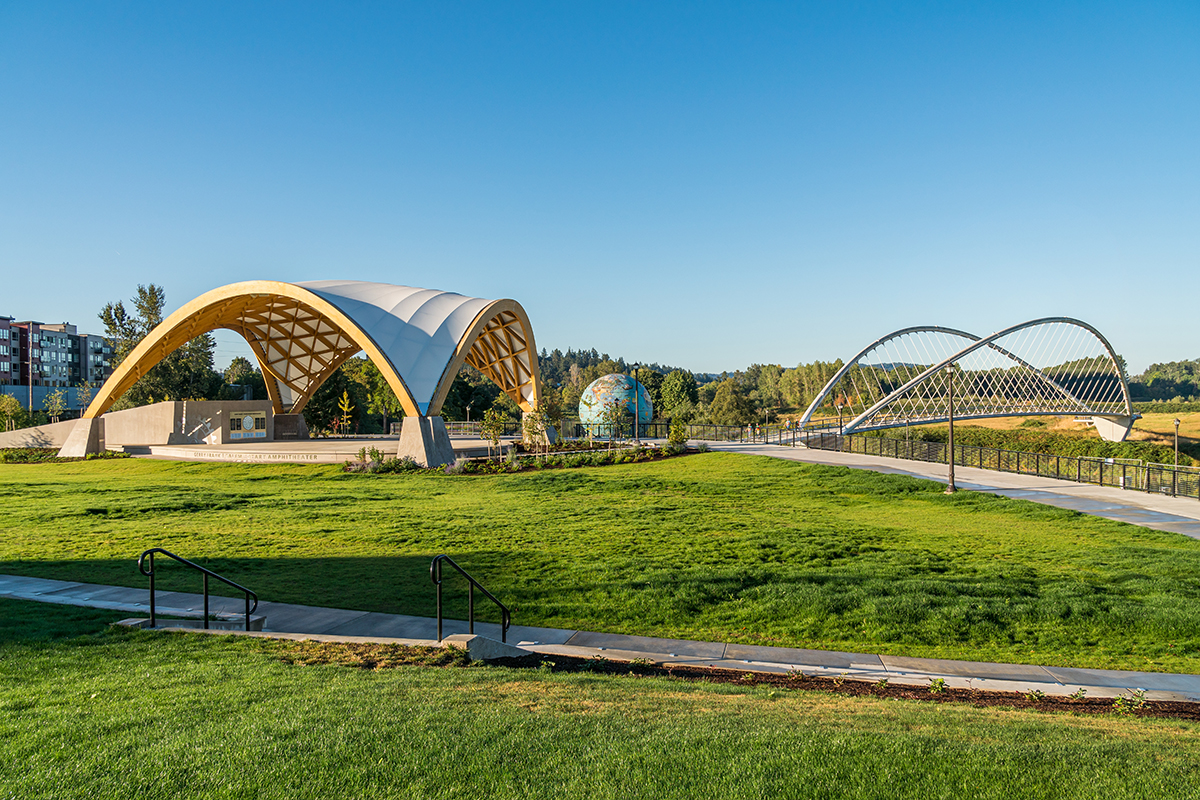I recently came across a photo from Jeffrey S. Green, who posts his incredible images at his Facebook page representing Dynamic Photography. I was instantly captivated by the photo, and naturally curious as to the history of this beautiful location in Oregon.
After reaching out to Jeffery, while he didn't know much about the history it didn't take long for the owner, Colby Lamb, to reach out. I was able to get connected with Lamb, who provided us with everything he knows about this gorgeous spot. The following is an email from Lamb himself:
In 1973, Henry "Hank" Hiebert, a logger at the time, built his home in Niagara, Oregon. Niagara had been a small but thriving community until the early 1900's, but today all you will find is Niagara County Park, a beautiful spot on the North Santiam River. Across the highway to the north is a large red water wheel, easily seen from the highway, which was built by Mike Adams Construction in Stayton, Or. in 1984. It was built in sections and assembled on site, for a price of $8000. It is constructed entirely of steel, but it is not the first wheel.
The first wheel was made of wood and was about the same size as the current wheel. It is unclear whether Hiebert and his brothers built this one, or if it was built by a man named Tommy Sned, in Grande Ronde, Or. This wheel failed because it was too heavy for the two large bearings that supported it. Perhaps water soaked into the wood.
The current wheel is powered by water coming down a pipe from Niagara Creek, and originates at a point which is higher than the wheel. The water then goes up a large pipe, which is part of the support structure, and pours out onto the top of the wheel. The water right was granted in 1989, and the reason stated on the application was "aesthetics". As the wheel turns, the water falls onto the huge slab of concrete which supports the wheel, and then goes back to the creek, so the water is being "borrowed", rather than appropriated.
Although the axle of the wheel is perfectly level, and is locked to the bearings, the wheel has moved all the way to one side, and one part of the wheel, a 1/2” thick steel plate, has worn nearly in half from rubbing against a part of the support. Perhaps this movement was caused by the many dynamic forces involved which are not understood. To get the wheel back in operation will require centering it, changing the bearings, and making a modification to prevent further sideways movement. The current owners are committed to doing this, followed by a good power washing and paint job.
The small building next to the wheel was constructed perhaps in the 1990s. At that time, the son of Mr. Hiebert tried to drive a generator in the building to provide power for the house, but was not successful. Some degree of electricity was produced, and probably was used to power a street light which is still mounted on a nearby tree, as well as Christmas lighting.

